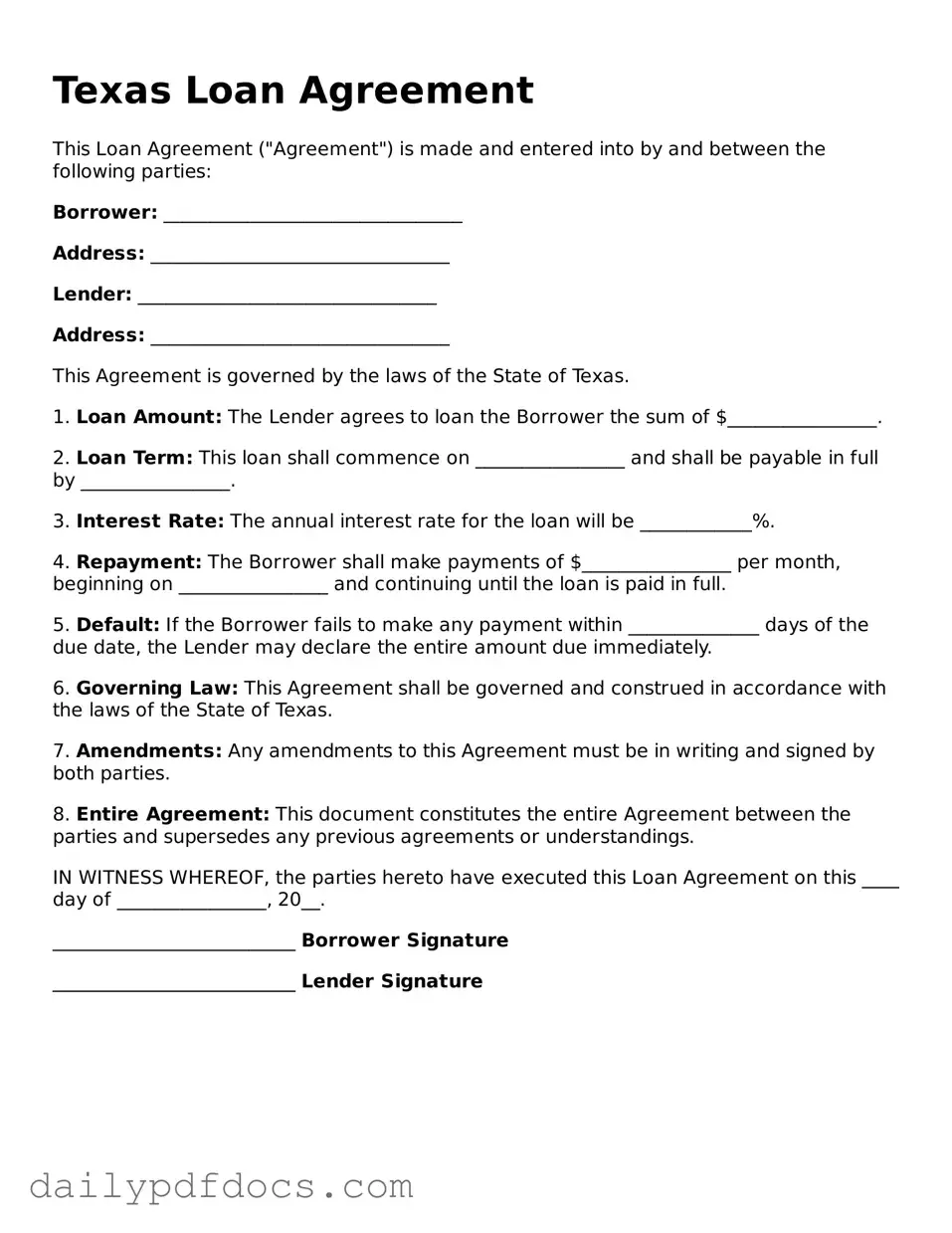Texas Loan Agreement
This Loan Agreement ("Agreement") is made and entered into by and between the following parties:
Borrower: ________________________________
Address: ________________________________
Lender: ________________________________
Address: ________________________________
This Agreement is governed by the laws of the State of Texas.
1. Loan Amount: The Lender agrees to loan the Borrower the sum of $________________.
2. Loan Term: This loan shall commence on ________________ and shall be payable in full by ________________.
3. Interest Rate: The annual interest rate for the loan will be ____________%.
4. Repayment: The Borrower shall make payments of $________________ per month, beginning on ________________ and continuing until the loan is paid in full.
5. Default: If the Borrower fails to make any payment within ______________ days of the due date, the Lender may declare the entire amount due immediately.
6. Governing Law: This Agreement shall be governed and construed in accordance with the laws of the State of Texas.
7. Amendments: Any amendments to this Agreement must be in writing and signed by both parties.
8. Entire Agreement: This document constitutes the entire Agreement between the parties and supersedes any previous agreements or understandings.
IN WITNESS WHEREOF, the parties hereto have executed this Loan Agreement on this ____ day of ________________, 20__.
__________________________ Borrower Signature
__________________________ Lender Signature
